St. Basil's Cathedral is the main miracle of Russian architecture. Description of St. Basil's Cathedral
The Cathedral of the Intercession on the Moat, also called St. Basil's Cathedral, is an Orthodox church located on Red Square in Moscow. A widely known monument of Russian architecture. Until the 17th century, it was usually called Trinity, since the original wooden church was dedicated to the Holy Trinity; was also known as “Jerusalem”, which is associated both with the dedication of one of the chapels and with the procession of the cross to it from the Assumption Cathedral on Palm Sunday with the “procession on the donkey” of the Patriarch.
Currently, the Intercession Cathedral is a branch of the State Historical Museum. Included in the List of UNESCO World Heritage Sites in Russia.
The Intercession Cathedral is one of the most famous landmarks in Russia. For many inhabitants of planet Earth, it is a symbol of Moscow (the same as the Eiffel Tower for Paris). Since 1931, in front of the temple there has been a bronze Monument to Minin and Pozharsky (installed on Red Square in 1818).
Located in St. Petersburg memorial temple, dedicated to Alexander II, - the Church of the Resurrection of Christ, better known as the Savior on Spilled Blood (completed in 1907). The Intercession Cathedral served as one of the prototypes for the creation of the Savior on Spilled Blood, so both buildings have similarities.
The Intercession Cathedral was built in 1555-60 by order of Ivan the Terrible in memory of the capture of Kazan and the victory over the Kazan Khanate.
There are several versions about the creators of the cathedral.
According to one version, the architect was the famous Pskov master Postnik Yakovlev, nicknamed Barma.
According to another, widely known version, Barma and Postnik are two different architects, both involved in the construction; this version is now outdated.
According to the third version, the cathedral was built by an unknown Western European master (presumably an Italian, as before - a significant part of the buildings of the Moscow Kremlin), hence such a unique style, combining the traditions of both Russian architecture and European architecture of the Renaissance, but this version is still I never found any clear documentary evidence.
According to legend, the architect(s) of the cathedral were blinded by order of Ivan the Terrible so that they could not build another similar temple. However, if the author of the cathedral is Postnik, then he could not have been blinded, since for several years after the construction of the cathedral he participated in the creation of the Kazan Kremlin.
There are only 10 domes. Nine domes over the temple (According to the number of thrones: the Intercession of the Virgin Mary (central), Holy Trinity (eastern), Entrance to Jerusalem (western), Gregory of Armenia (north-western), Alexander of Svirsky (south) -east), Barlaam of Khutyn (south-west), John the Merciful (formerly John, Paul and Alexander of Constantinople) (north-east), Nicholas the Wonderworker of Velikoretsky (south), Adrian and Natalia (formerly Cyprian and Justina) (northern)) plus one dome over the bell tower. (In the old days, St. Basil's Cathedral had 25 domes, representing the Lord and the 24 elders sitting at His throne). The cathedral consists of eight churches, the altars of which were consecrated in honor of the holidays that occurred during the decisive battles for Kazan: Trinity, in honor of St. Nicholas the Wonderworker (in honor of his Velikoretskaya icon from Vyatka), Entry into Jerusalem, in honor of the martyr. Adrian and Natalia (originally - in honor of St. Cyprian and Justina - October 2), St. John the Merciful (before XVIII - in honor of St. Paul, Alexander and John of Constantinople - November 6), Alexander of Svir (April 17 and August 30), Varlaam of Khutyn (November 6 and the 1st Friday of Peter's Lent), Gregory of Armenia (September 30 ). All these eight churches (four axial, four smaller ones between them) are crowned with onion domes and grouped around the ninth pillar-shaped church rising above them in honor of the Intercession of the Mother of God, completed with a tent with a small dome. All nine churches are united by a common base, a bypass (originally open) gallery and internal vaulted passages.
In 1588, a chapel was added to the cathedral from the northeast, consecrated in honor of St. Basil the Blessed (1469-1552), whose relics were located on the site where the cathedral was built. The name of this chapel gave the cathedral a second, everyday name. Adjacent to the chapel of St. Basil's is the chapel of the Nativity of the Blessed Virgin Mary, erected over the burial place of the blessed one. John of Moscow (initially consecrated in honor of the Deposition of the Robe, but in 1680 reconsecrated as the Nativity of the Theotokos), where the relics of John the Blessed, found in 1672, rest.
Bell tower
A tented bell tower was built in the 1670s.
The cathedral has been restored several times. In the 17th century, asymmetrical extensions were added, tents over the porches, intricate decorative treatment of the domes (originally they were gold), and ornamental paintings outside and inside (originally the cathedral itself was white).
In the main, Intercession, church there is an iconostasis from the Kremlin Church of the Chernigov Wonderworkers, dismantled in 1770.
The last (before the revolution) rector of the cathedral, Archpriest John Vostorgov, was shot on August 23 (September 5), 1919. Subsequently, the temple was transferred to the disposal of the renovation community.
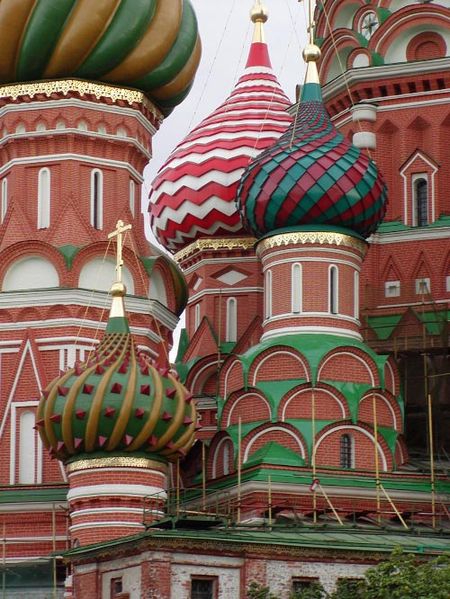
In 1929 it was closed for worship and the bells were removed. It began to be used for worship again on October 14 (Feast of the Intercession) 1991. Divine services are performed by clergy of churches in Zaryadye and Kitai-Gorod.
Since 1990, the temple-museum began collecting bells again. Currently, this collection is one of the richest existing collections not only in Moscow, but also in Russia. In total, the museum has 19 bells, created in 1547-1996 (casting places - the Urals, Yaroslavl, Moscow, as well as France, Holland, Germany, Western Belarus). The bells were cast by such famous masters as Fyodor and Ivan Motorin, Semyon Mozhzhukhin, P. I. Olovyashnikov, P. N. Finlyandsky, A. A. Samgin. The cathedral also has an interesting collection of weapons from the times of Ivan the Terrible.
Each capital has its own symbol, by which it is unmistakably recognizable. For Moscow, this is the Intercession Cathedral on Red Square, better known as St. Basil's Cathedral. The building, which looks like a precious box, cannot be confused with any other because of the amazing silhouette formed by the heads of nine churches erected on a single foundation, and the unique, colorful and joyful design of their facades...
Any work of art, man-made or miraculous miracle is surrounded by an aura of mystery. Take Leonardo’s “La Gioconda,” Mozart’s “Requiem,” the Great Pyramids, Lake Baikal or the Grand Canyon. What kind of miracle is this if legends are not made about it? If it doesn’t make you want to learn more about it and, when there is not enough information, start making guesses that eventually turn into legends?
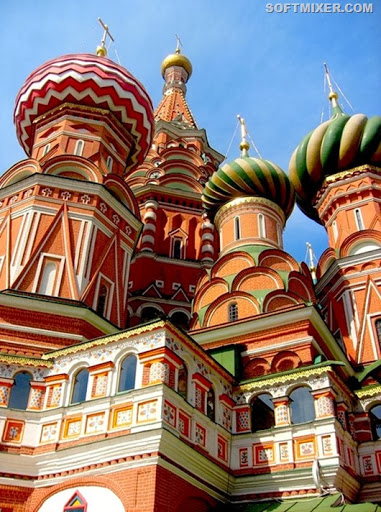
Cathedral of the Intercession of the Mother of God (Cathedral “What’s on the Moat” or St. Basil’s Cathedral).
In this, as in many other respects, St. Basil's Cathedral is a true, one hundred percent miracle - what stories are told about it! But, it would seem, about a building erected on central square capital, everything should be known for certain. But no, that was not the case...
It is believed that the Church of the Intercession was built in 1555-1561 by Russian architects Barma and Postnik Yakovlev. Although there is a hypothesis that it was one master - Ivan Yakovlevich Barma.
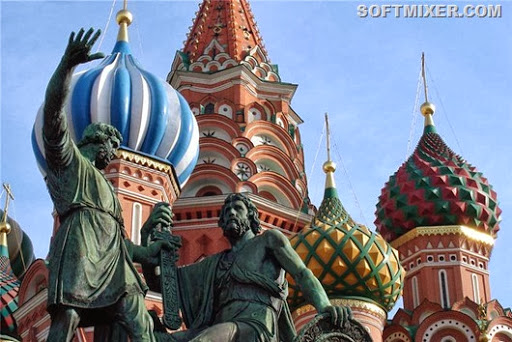
There is a well-known legend that when Ivan the Terrible asked whether the craftsmen could build another, equally beautiful temple, one of them defiantly answered: “We can!” - and thus angered the king. "You're lying!" - cried the Terrible and ordered the masters to be blinded so that they would not build such a miracle anywhere else. Similar stories, however, are told about many Russian and foreign councils, so they are hardly worth believing.
Another legend says that Ivan the Terrible built this temple in honor of his father, Grand Duke Vasily III: “People will remember me even without churches for a thousand years, but I want my parent to be remembered.” This is supposedly where the name of the temple came from.
In honor of another Vasily
Initially on the edge of the Moscow River, on a hill next to the ditch that surrounded medieval Kremlin and buried in the 19th century, stood a white stone temple in the name of Life-Giving Trinity, where the most revered holy fool in Rus', Basil the Blessed, was buried. Then, by order of Tsar Ivan the Terrible and with the blessing of Metropolitan Macarius, new churches began to be built around it, most of which were consecrated in memory of the events of the Kazan campaign.
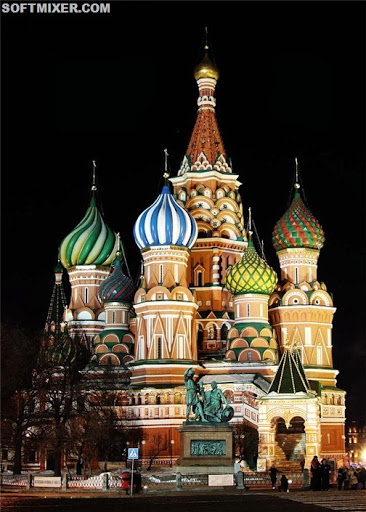
The complex that grew up on the site of the former temple was called the Cathedral of the Intercession of the Virgin Mary, in common parlance - the Church of the Intercession on the Moat
At the end of the 16th century, on the site of the dismantled north-eastern part of the gallery above the grave of the Moscow holy fool, canonized Saint Basil, a church appeared, consecrated in his name. Unlike the churches of the Intercession Cathedral, where services were held on the days of the twelfths and patronal feasts, in the Church of St. Basil the Blessed the service was daily. This was the reason for the appearance of the popular name for the Intercession Cathedral - St. Basil's Cathedral.
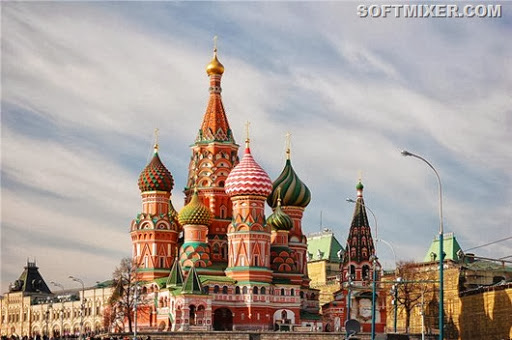
This temple was the geometric center of the capital's urban planning ensemble, and its 46-meter tent was the tallest in Moscow until Boris Godunov ordered the construction of the bell tower of the Kremlin Church of St. John the Climacus to 81 meters, after which it began to be called Ivan the Great.
Briefly about the main thing
St. Basil's Cathedral is a symmetrical ensemble of eight pillar-shaped churches surrounding the ninth, the tallest, crowned with a tent. The central church is dedicated to the Feast of the Intercession of Our Lady - it was on this day that Kazan was taken by storm.
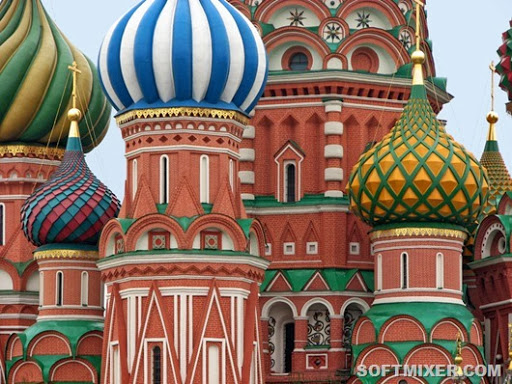
The chapels are connected to each other by a system of transitions. The pillar-shaped churches are topped with onion domes, none of which is identical in architectural decoration to the others. Each dome is decorated with cornices, kokoshniks, windows and niches. In general, the cathedral creates a feeling of festivity and elegance. In total there are 9 iconostases, which contain about 400 icons of the 16th-19th centuries, representing the best examples of the Novgorod and Moscow icon painting schools.
The walls of the cathedral are decorated with oil paintings and frescoes of the 16th-19th centuries. In addition to icons, the cathedral displays portrait and landscape paintings and church utensils. Among the particularly valuable exhibits is a 17th-century chalice that belonged to Tsar Alexei Mikhailovich.
We protect people and God
According to Orthodox priests, St. Basil's Cathedral was preserved by the special providence of God - more than once it found itself on the brink of destruction and yet remained intact.
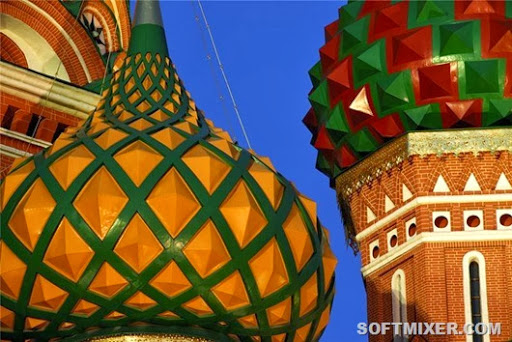
In 1737, the Intercession Church was badly damaged by a fire, but was restored and, according to eyewitnesses, became even more beautiful. Having seen it, Napoleon, according to legend, ordered to transport the Moscow miracle to Paris, but the technology of that time was unable to solve this problem. Then, before the retreat of the French army, Napoleon ordered the temple to be blown up along with the Kremlin. Muscovites tried to extinguish the lit fuses, and suddenly pouring torrential rain helped them stop the explosion.
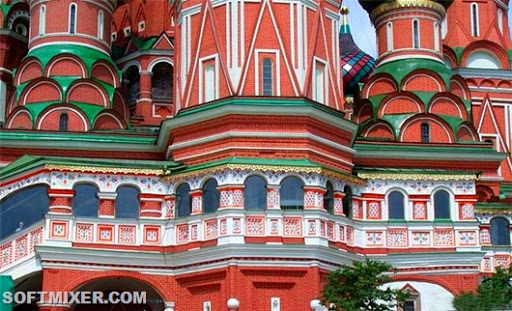
Among others, there is a legend that in 1936 Lazar Kaganovich proposed demolishing the Intercession Cathedral to clear space for festive demonstrations and traffic on Red Square. By his order, a model of Red Square with a removable Intercession Church was made, which Kaganovich brought to Stalin. Starting with a story about how the cathedral interferes with demonstrations and cars, he allegedly with the words “What if it was - r-time!..” - he jerked the temple from the square. Stalin looked, thought and slowly uttered the famous phrase: “Lazarus! Put it in its place!”
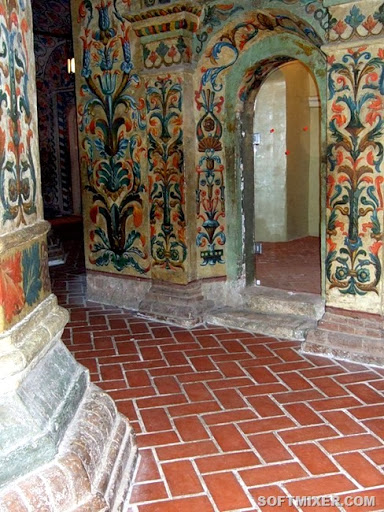
The question of the demolition of the temple was indeed raised, but, according to a number of historians, in solving it main role played by the courage of the architect P.D. Baranovsky. When he was ordered to prepare the temple for demolition, he flatly refused and threatened to commit suicide, and then sent a harsh telegram to the Kremlin: to the Central Committee and, as usual, personally to Comrade Stalin.
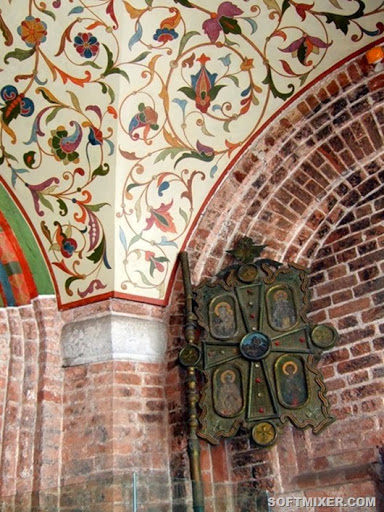
According to one version, the letter reached the addressee, and Baranovsky, being invited to the Kremlin, knelt before the assembled Central Committee, begging not to destroy the temple. It is unlikely that this was exactly what had an effect, but one way or another, something really stopped Stalin - the decision to demolish it was canceled.
Everything is back to normal...
According to one of the official versions, and there are also several of them, in 1918 the Intercession Cathedral was one of the first to be taken under state protection as a monument of national and world significance. Since May 21, 1923, it has been open to visitors as a historical and architectural museum. Moreover, until 1929, services were held in the Church of St. Basil the Blessed.
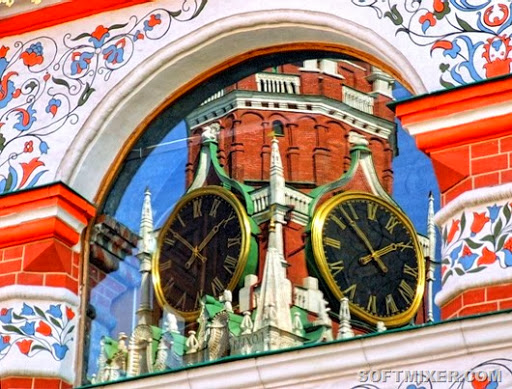
Then the cathedral became a branch of the State Historical Museum. Scientific restoration research began, thanks to which it became possible to restore the original appearance of the cathedral and recreate the interiors of the 16th-17th centuries in individual churches. Since then, four global restorations have been carried out, including architectural and painting works.
In the 60s of the 20th century, during restoration work, a temple chronicle was discovered, in which the builders indicated the exact date of completion of the cathedral - July 12, 1561 (Peter's Day); The iron coverings of the domes of the cathedral churches were replaced with copper ones.
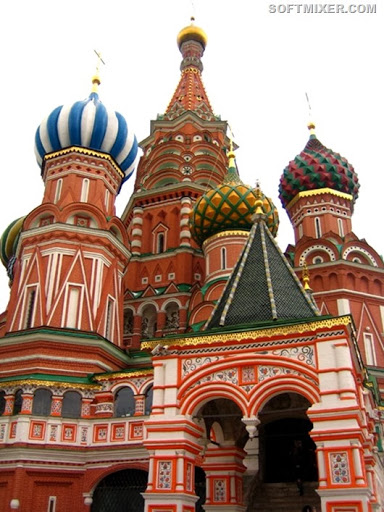
In the 70s, during restoration, a spiral wooden staircase was discovered in the wall. This is how museum visitors now get to the central temple, where they can see the magnificent tent soaring into the sky and the most valuable iconostasis, as well as walk through the narrow labyrinth of the internal gallery, painted with marvelous patterns.
The Intercession Cathedral is federal property. Since 1990, it has been used both as a museum and as a temple in which the Russian Orthodox Church holds services.
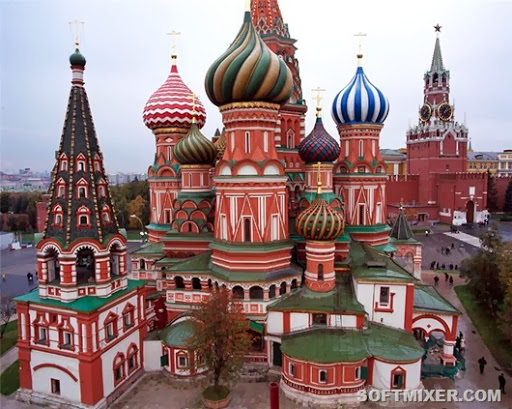
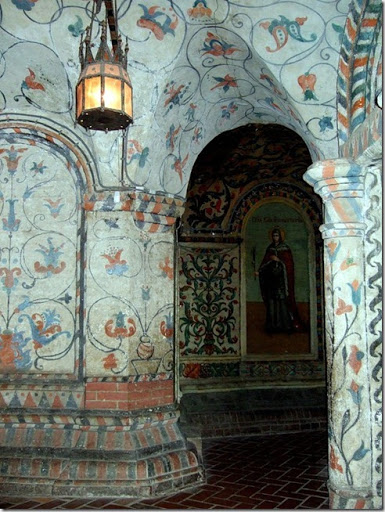
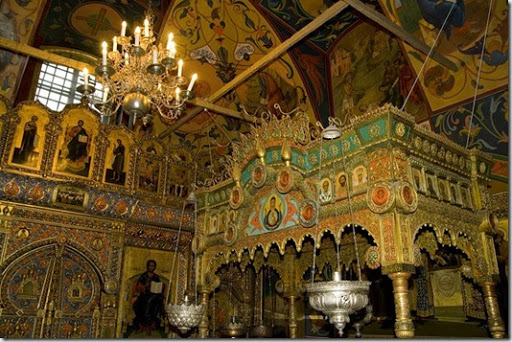
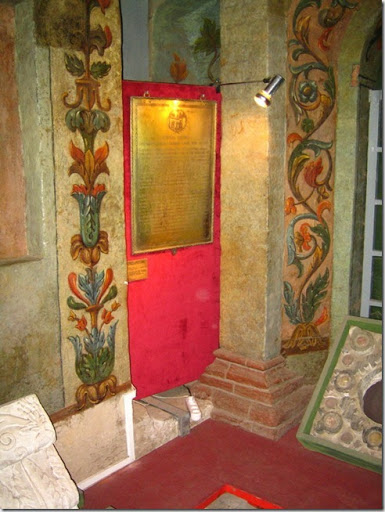
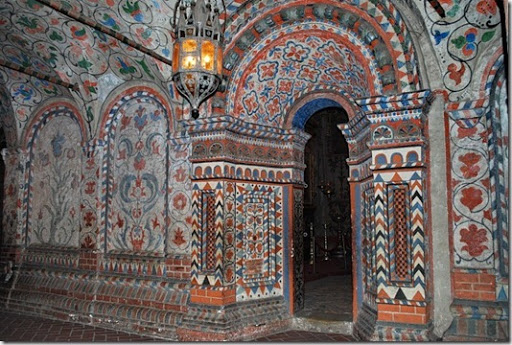
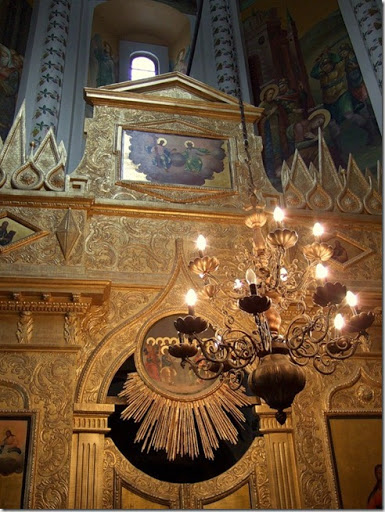
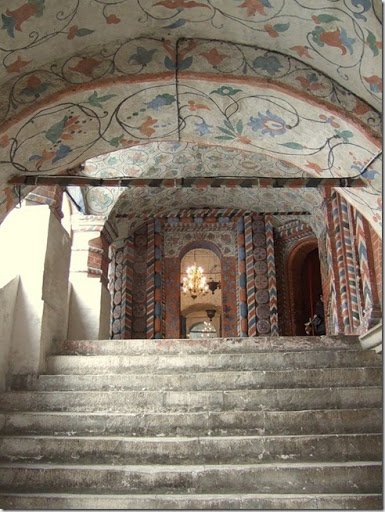
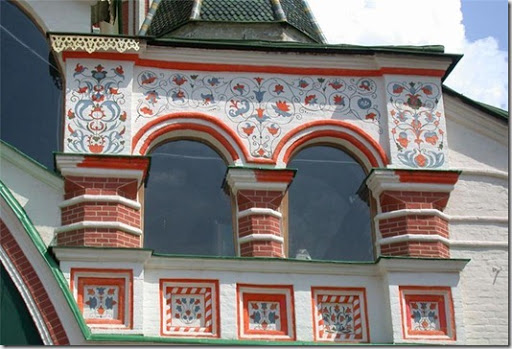
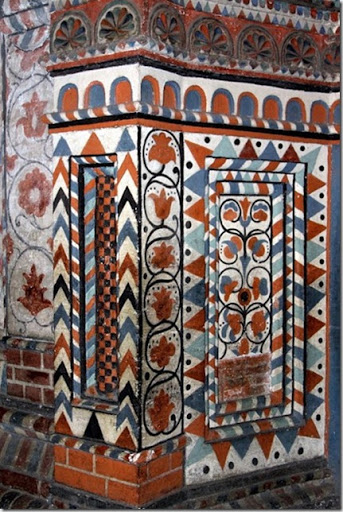
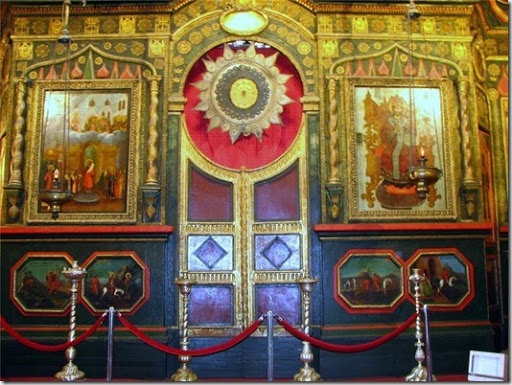

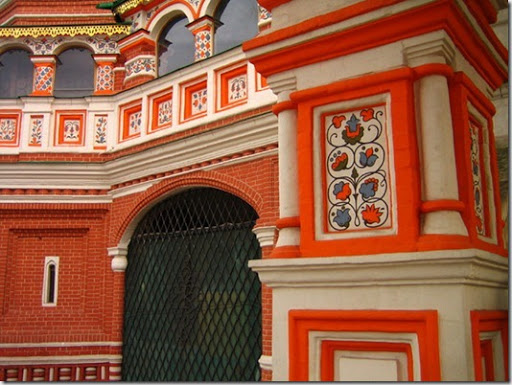
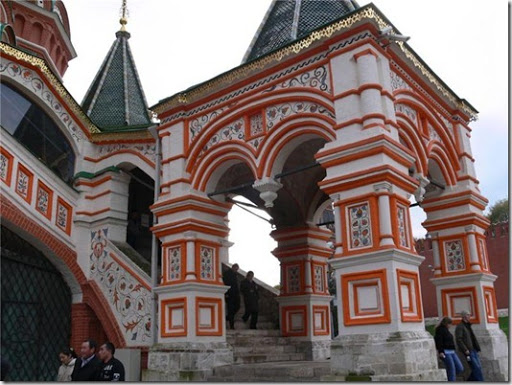
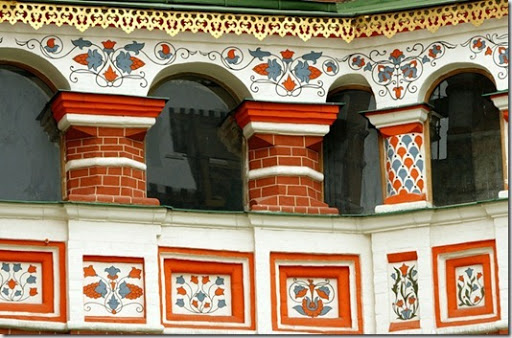
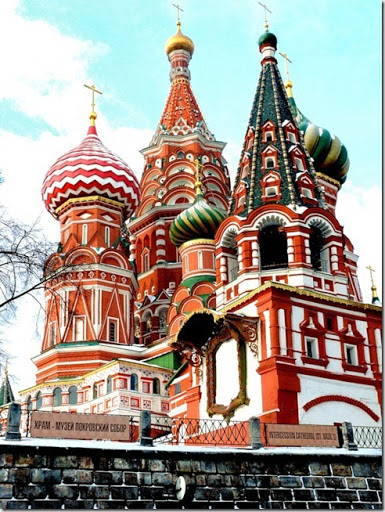
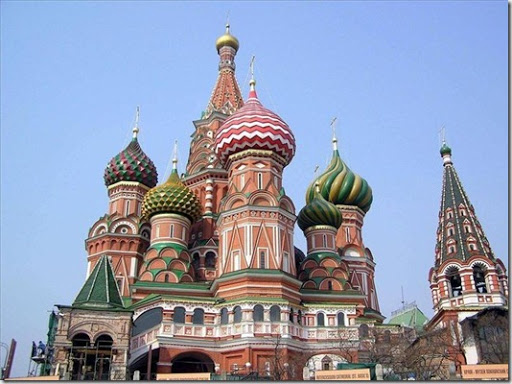
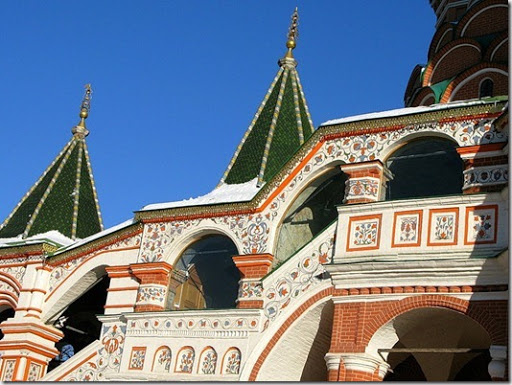
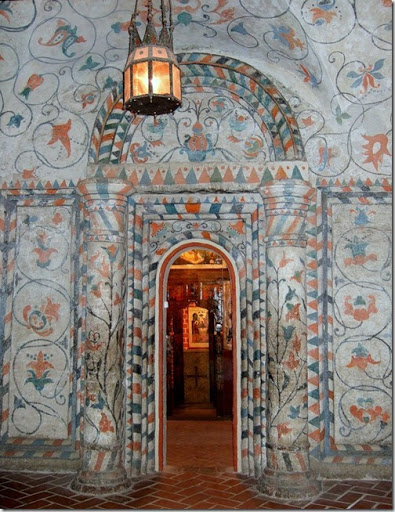

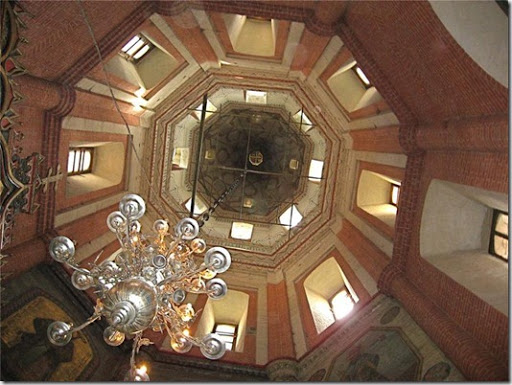

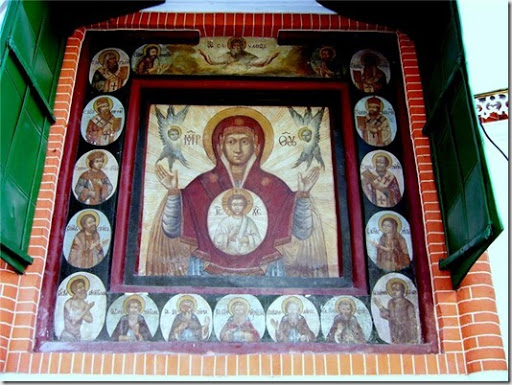
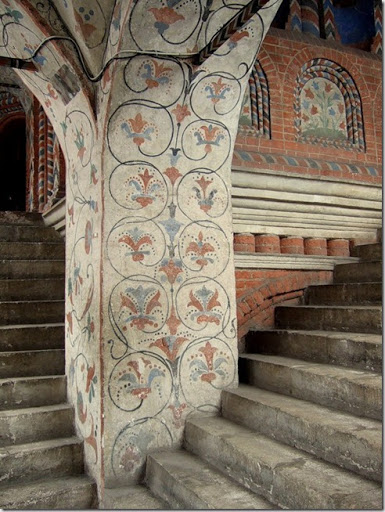

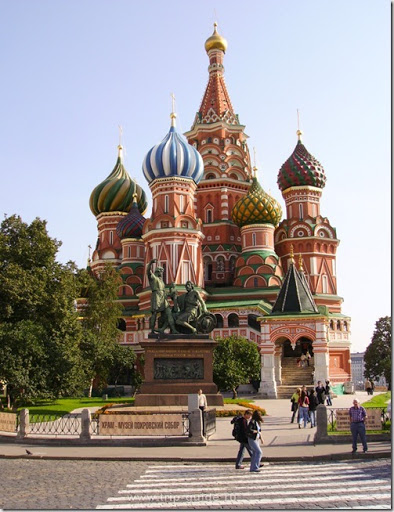
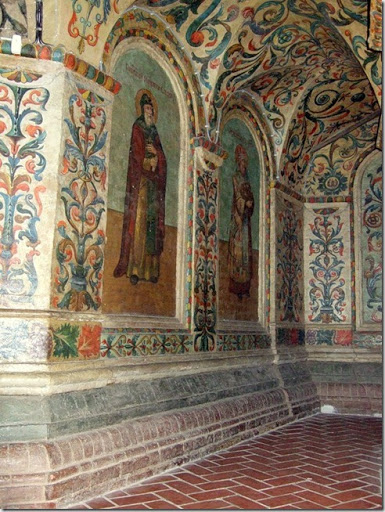
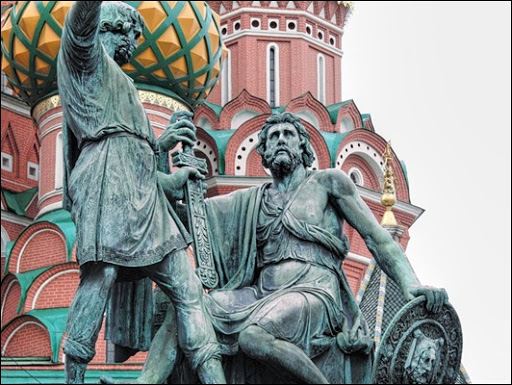
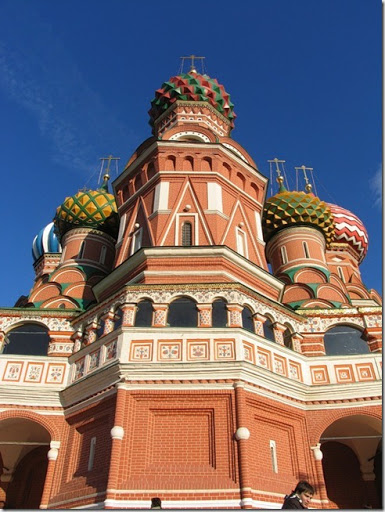
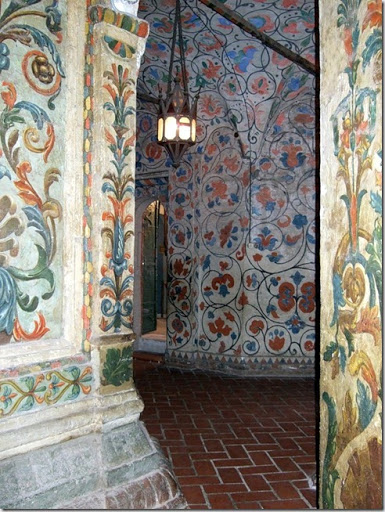
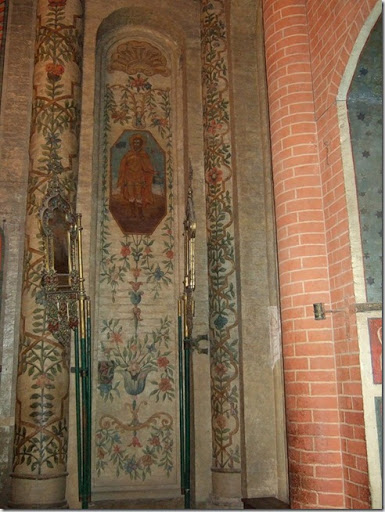
Freeing Red Square from buildings that “interfere” with large-scale holiday events(parades and demonstrations), Lazar Kaganovich proposed to completely dismantle St. Basil's Cathedral. And in order to convince Stalin that he was right, for clarity, he made a model of the square from which the church could be removed. But everything did not go as he planned: when he took the cathedral from the model, the leader did not appreciate these actions and said a phrase that would go down in the history of the temple forever: “Lazarus, put it in its place!”
St. Basil's Cathedral is located in the capital of Russia, Moscow, not far from the Kremlin, in the southern part of Red Square. On geographical map it can be found at the following coordinates: 55° 45′ 9.25″ N. latitude, 37° 37′ 23.27″ e. d.
A huge stone temple appeared here after Tsar Ivan the Terrible promised God that if the Kazan campaign was successful, he would build a cathedral. In the meantime, while hostilities lasted, after each serious victory on Red Square, temporary churches were erected around the Trinity Church, dedicated to the saints on whose day the battle was won. When the war ended in victory, the tsar ordered on the site of these churches (there were eight buildings in total) to build one, a stone one, which would stand for centuries, and in honor of the fact that the final victory came on the Intercession, in October 1552, to name the temple the Intercession Cathedral.
The new church was built very quickly, in six years. The construction of the Moscow temple began in 1555 and ended in 1561. Researchers have still not come to a consensus about who exactly was its architect. Official version suggests that the architects Plotnik Yakovlev and Barma were responsible for the construction work, but recently many historians agree that the architect of the temple was only one master - Ivan Yakovlevich Barma, popularly known as Plotnik.
Some historians put forward another unconfirmed hypothesis that the architect of the building is an Italian master (this is evidenced by the original style of construction, combining both elements of Russian architecture and European architecture of the Renaissance).
After the construction was completed, a legend arose that the king ordered the architects to be blinded so that they could not build a temple of such beauty. Recently, historians agree that this is just a myth, since there are documents confirming the architectural activities of Plotnik, who was involved in the construction of the Kazan Kremlin and other buildings.
Temple names
Even before the start of construction work, Moscow Tsar Ivan the Terrible named the temple erected not far from the Kremlin the Intercession Cathedral. For a long time, Muscovites called the cathedral the Trinity Church (the previously located shrine was dedicated to the Holy Trinity). And some time after the completion of construction, people nicknamed the temple St. Basil's Cathedral - in honor of the local holy fool, who constantly, regardless of the season, walked around with chains on his naked body. St. Basil the Blessed had clairvoyance and was able to predict the fire that almost destroyed Moscow in 1547.
He died in 1557 and was buried near the walls of the unfinished shrine, and thirty years later a chapel, an extension, was erected over his grave, in which an altar with a throne for worship was installed. Naturally, the chapel received the name of the blessed one, who was canonized at the same time: more than one miraculous healing was recorded over the place of his burial.
After the extension was completed, services began to be held in the Moscow cathedral every day: previously the temple was not heated, and therefore services took place there only in the warm season (the new extension was more spacious and warm).
Construction
The architects built the cathedral from brick - a rather new and unusual material at that time (usually, when building churches, architects used white hewn stone). In the western part of the temple, the craftsmen were even able to lay a ceiling of bricks, making round holes in them, inserting a metal clip and securely fastening them together. 
Already at the initial stage, the architect faced the first problem: the building had to be built on sandy, loose and wet soil (the proximity of the Moscow River flowing nearby affected it), which made it impossible to make a deep foundation (the foundation of the temple is several meters deep). To resolve the situation, the architects used a very interesting move: the massive structure of the temple rests on a basement consisting of several rooms - the lower floor, the height of which is six meters, and the width of the walls is three meters, while the basement has very powerful vaults and ceilings.
As a building material for ground floor it was decided to go with white limestone: its ability to absorb moisture well made it possible to minimize the risk of flooding in the event of a flood. After the basements were installed, octagonal foundations were placed on them, on which it was planned to build future temples (thus, the foundation of the building externally resembled a honeycomb and was characterized by increased strength).
It is interesting that experts, speaking about the secrets of St. Basil's Cathedral, often mention hiding places that were built in special niches on the lower floor (until the end of the 16th century, the royal treasury was even hidden here, and rich townspeople hid their property). It was not easy to get here - only a few people knew about the stairs leading from the Church of the Intercession of the Mother of God, and subsequently this narrow passage was walled up. The passage was discovered only in 1930, when restoration work was carried out; now the icons of the cathedral are stored in the basement rooms.
The architects used an interesting method when creating acoustics inside the cathedral (a method not uncommon in the construction of ancient Russian churches): in order to create good sound, the architects installed clay pots and voice boxes into the walls of the temple, directing their necks towards the interior of the building. This method made it possible to relieve pressure on the load-bearing parts of the temple.
Description of the temple
Giving a description of the Moscow temple, experts focus on the fact that it lacks a clearly defined main facade: all its sides look basic. The height of the structure reaches 65 meters, so for a long time the temple was considered the most tall building cities. 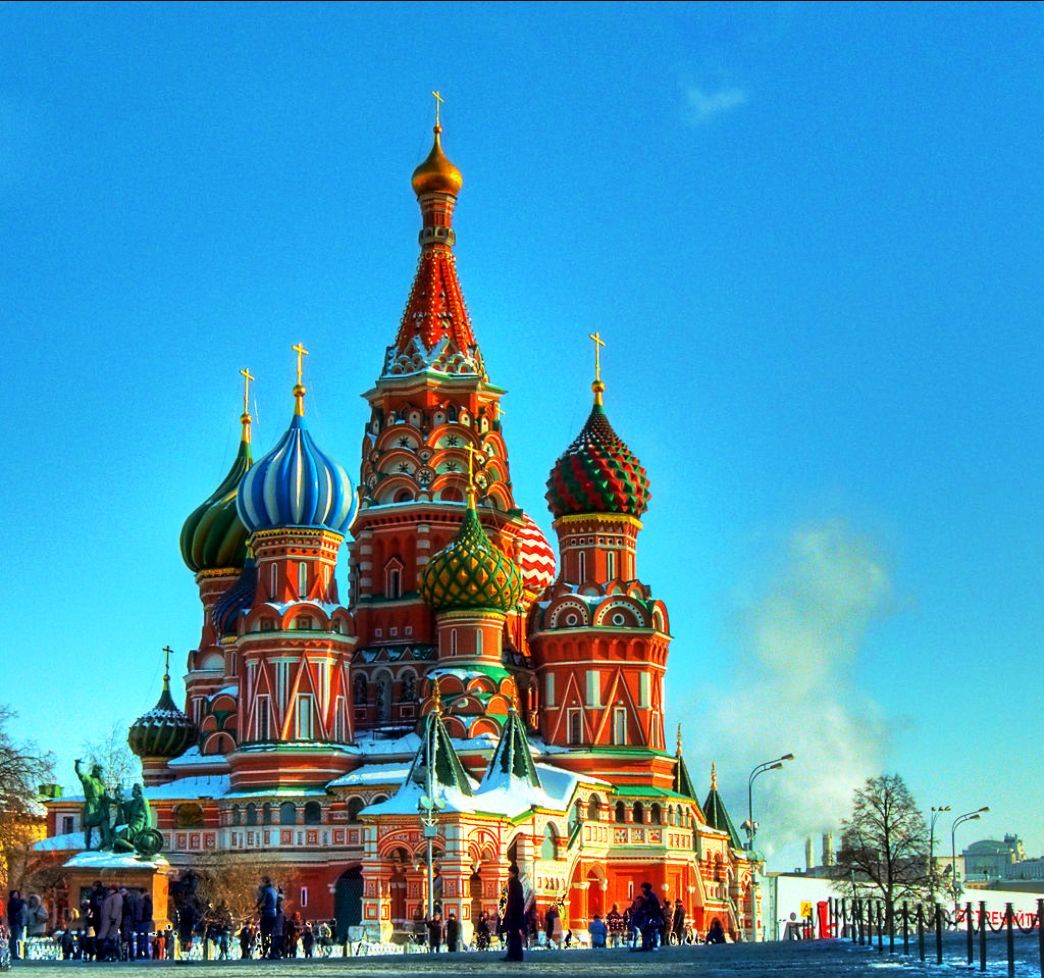
Nowadays, looking at the temple, it is difficult to believe that initially the cathedral was not so colorful: judging by the descriptions, the walls of the church were white. They began to repaint it some time later, and they did this by radically changing the appearance of the cathedral - historians discovered drawings on its walls depicting false windows, kokoshniks, and memorial inscriptions. Polychrome and floral painting on a red background appeared only at the end of the 17th century. Judging by the descriptions that have survived, in former times the Intercession Cathedral was more beautiful and elegant: it had more complex paintings, and the main dome was surrounded by smaller ones.
The appearance of the building was quite changed a hundred years after construction was completed: two porches were added, the external gallery was covered with vaults, and the walls were painted inside the cathedral. Therefore, in the temple you can see a combination of rare monuments of ancient Russian icon painting with frescoes of the sixteenth century, paintings of the seventeenth, and oil paintings of the eighteenth.
The temple was built taking into account the cardinal directions: focusing on them, they built four churches, and the same number were built diagonally. The Intercession Cathedral has nine churches: in the center is the main Church of the Intercession of the Mother of God, surrounded by four large (from 20 to 30 m) and four small churches (about 15 m), near which there was a bell tower and St. Basil's chapel. All these churches are located on the same foundation, have a common bypass gallery and are connected by internal corridors.
Domes of the Intercession Cathedral
At first, twenty-five domes were installed on the Intercession Cathedral, symbolizing the Lord and the elders located near his throne. Subsequently, only ten of them remained: one is located above the bell tower, the other rises above the chapel of St. Basil's, the rest - each above its own temple. At the same time, they are all different from each other: not only the design of the large domes is unique, but also the finishing of each drum.
Scientists suggest that initially the domes had a helmet-shaped shape, but were quickly replaced by a bulbous shape; the current colors appeared only in the middle of the 19th century, and until the 17th century. the temple had golden domes.
Temple today
Judging by the descriptions, throughout history, St. Basil's Cathedral was rebuilt and changed its appearance more than once (frequent fires, which were not uncommon in the city, also contributed to the need for frequent repair work).
For the first time, St. Basil's Cathedral was on the verge of extinction in 1812, when the French, leaving the capital of Russia, mined it (though for some reason they could not blow it up, but they plundered the church). When the war ended, the Intercession Cathedral was not only restored, but also on the river side its wall was decorated with a cast-iron fence.
The temple experienced the saddest times in the 20th century. In 1918, the Bolsheviks shot the rector of the church, Ivan Vostorgov, for “anti-Semitic propaganda.” Three years later, all valuables were removed from the cathedral, and the building was transferred to the Historical Museum. For some time it remained an active church, until in 1929 services were banned by removing all the bells (services in the cathedral were resumed only in 1991).
The second time the temple was on the verge of extinction was in 1936, when restorer Pyotr Baranovsky was asked to measure the temple in order to subsequently demolish it. In response to this, the architect categorically stated that this idea was insane and criminal, and threatened to commit suicide if it was carried out. Immediately after this, an arrest followed, but the church was not touched: it had too many defenders. Therefore, when he was released six months later, the temple stood in the same place.
450 years old - July 12, 2011 marks the anniversary of one of the symbols of Red Square and Moscow as a whole - the Intercession Cathedral (Cathedral of the Blessed Virgin Mary on the Moat), better known as St. Basil's Cathedral. This acting orthodox temple, and at the same time a monument of Russian architecture (recognized by UNESCO as a world heritage) many have seen with their own eyes and even visited there, even more have heard about it, but not everyone knows what kind of building it is and what its history is...
Construction
Construction of the temple began in 1555 - Ivan the Terrible ordered in this way to perpetuate the memory of the victory over the Crimean Khanate, specifically the capture of Kazan. There are several versions about the executors of the royal decree.
- According to one of them, the chief architect was a master from Pskov, Yakovlev Postnik, nicknamed Barma
- The version that Postnik and Barma were two different people whose architectural plans were realized simultaneously was once popularized even more widely
- The third version is that the construction was commanded by an unknown master from Europe, possibly an Italian. In favor of this option, there are large differences in the style of construction from traditional Russian architecture (the elements of the cathedral contain many elements inherent in the masters of the European Renaissance school)
According to legend, the king blinded the architect (or two, according to the second version). But Postnik definitely later participated in the creation of the Kazan Kremlin, and could not have been deprived of sight from the Moscow Kremlin. The version with a foreign architect is also doubtful, at least no official confirmation has been found.
Additions and renovations
Be that as it may, the main part was completed by 1561. Later, in 1588, the St. Basil's chapel church was added to the main temple. This chapel got its name in honor of the famous (it was rumored that Grozny himself was afraid of him) Moscow holy fool, whose grave was next to the cathedral. In fact, the construction of the chapel was carried out on this grave, and began immediately after the canonization. The order for construction was already given by Fyodor Ioannovich. She is separate architectural structure, although it was built using special arched spans in the north-eastern part of the main cathedral. This chapel gave the complex its second name.
From this moment on, the earlier name of the cathedral - Trinity (the main of the temples in the complex was consecrated in honor of the Trinity, since the decisive battles for Kazan took place precisely on the days of the holiday) begins to go out of use. Increasingly, the complex is called St. Basil's Cathedral. In addition to these names, “Jerusalem” was also used - firstly, because of the name of another of the chapels. Secondly, it was here that he was heading from the Assumption Cathedral procession, organized on Palm Sunday with the participation of the Patriarch.
The original “golden” covering, which burned down during one of the then frequent fires, was replaced with figured domes at the end of the 16th century. And a century later, another reconstruction was carried out:
- they blocked the walking gallery around the upper churches with a vault;
- porches with tents were built on the white stone stairs;
- new and old passages and galleries were painted with grass patterns.
As a result, the general outlines of the structure and a number of its elements lost their symmetry. The exact list of works and the time of completion (1682) are attested on the facade of the cathedral itself - corresponding inscriptions were applied to some of the ceramic tiles. A little earlier (approximately in the 1670s) a hipped bell tower was built.
Before the revolution of 1917, the Intercession Church was one of central cathedrals empire, and one of the most beautiful. Updates and repairs were carried out at the “prevention” level...
The last rector of the cathedral during the imperial period was Archpriest John Vostorgov. On August 23 (September 5, old style), 1919, he was shot, and soon the right to dispose of the temple was transferred to the renovationist community.
The new government paid attention to the cathedral in 1923. It was decided to create a historical and architectural museum on the basis of the temple, the first director of which was E. I. Silin, who had previously served as a researcher at the Historical Museum. The work of the complex as a museum did not stop right up to the war, but since 1929 the temple was closed for worship, and the bells were removed from the bell tower. According to unconfirmed reports, in the mid-1930s the temple was going to be completely demolished, but it avoided such a fate thanks to the intervention of influential people.
In 1931, a monument to Minin and Pozharsky was erected in front of the cathedral, moved here from Red Square.
After the war, the cathedral-museum began to be actively restored and was symbolically opened on the 800th anniversary of Moscow (September 7, 1947). Over time, it became one of the calling cards of the Moscow Kremlin, the city and even the country.
Modern look
In 1991, the Intercession Cathedral was transferred under the joint patronage of the Russian Orthodox Church And State Museum. After a 60-year break, religious services began to be held here again. So today it is at the same time a functioning religious building, an architectural monument and a museum in demand by tourists all over the world.
The basis of the cathedral and its central temple is the pillar-shaped Church of the Intercession of the Mother of God. Around it, along the vectors of the cardinal directions, there are eight more churches - four larger and four smaller:
- On the north side – Adriana and Natalia (originally a chapel in honor of Cyprian and Ustina)
- To the south is the Church of St. Nicholas the Wonderworker (the throne was consecrated in honor of the Vyatka Velikoretsk Icon of the Wonderworker)
- The eastern side belongs to the mentioned Church of the Holy Trinity
- The West is occupied by the Church of the Entry of the Lord into Jerusalem
- In the southeast stands the Church of Alexander Svirsky
- Southwestern part - Valaam Khutynsky
- From the north-west, the Temple of Gregory of Armenia
- In the northeast is the Church of St. John the Merciful (formerly St. Paul, Alexander and John of Constantinople)
The throne of each of the churches, as in the case of the main Intercession Cathedral, was consecrated in honor of the holidays on which the battles for Kazan fell
All nine churches have a common base, they are connected by internal passages, and a bypass gallery runs along the outer “diameter”. Domes over central temple 11 - in addition to the domes of each of the churches, 2 more are visible - the dome of the bell tower and the dome of St. Basil's chapel. The top of the main church is made in the form of a tent with a small dome; above all the other temples the domes are onion-shaped.
In addition to the chapel of St. Basil, adjacent to it, there is another chapel - the Nativity of the Blessed Virgin Mary, where the relics of Blessed John of Moscow are kept.
In the central part of the Intercession Cathedral there is an iconostasis, which previously stood in the Church of the Chernigov Wonderworkers (dismantled in 1770). At the same time, the Alexander Cathedral was also dismantled, and its iconostasis now stands in the Church of the Entrance to Jerusalem.
The Intercession Cathedral served as a “prototype” for another famous religious building - the St. Petersburg Church of the Resurrection of Christ (Savior on Spilled Blood, built in honor of the memory of Alexander II), made according to its model.
Soviet writer Dmitry Kedrin dedicated his ballad poem “The Architects” to this cathedral, or rather to the legend of its creation.
One of the episodes in the documentary series is closely related to St. Basil's Cathedral. According to the filmmakers, in the event of the complete disappearance of humanity, 125 years after such a cataclysm, this will be the only surviving building in the Red Square area.
There is Saint Basil’s Cathedral in Red Square in Moscow. It is one of the outstanding symbols of the Russian Federation. It was built from 1555-1561 on orders from the tsar Ivan the Terrible by Russian architects Barma and Postnik to commemorate the capture of Kazan and Astrakhan.
The architecture of the cathedral is unique and amazing; it attracts the attention of historians, culture specialists, fine art experts and tourists.
The cathedral is an ensemble of eight churches of different shapes topped with onion domes that are traditional for the Russian architecture.
Each church is named in honor of the saint in whose memorable day there was an important event during the campaigns of the tsar Ivan the Terrible to Kazan. The central church is dedicated to the Eastern Orthodox feast of the Protection of the Theotokos. The building, now a museum, is officially known as the Cathedral of the Intercession of the Most Holy Theotokos on the Moat.
There is a legend that when Ivan the Terrible saw the cathedral of such an amazing beauty, he ordered to blind the masters, so that they were unable to repeat their masterpiece.
On Red Square in Moscow there is St. Basil's Cathedral - this is one of the brightest symbols Russian Federation. It was built by Russian architects Barma and Postnik in honor of the capture of Kazan and Astrakhan in 1555-1561 by order of Tsar Ivan the Terrible.
The architecture of the cathedral is unique and amazing; it attracts the attention of historians, cultural experts, art historians and tourists.
The cathedral is an ensemble of eight churches of different shapes, crowned with onion domes, traditional for Russian architecture.
Each church is named after a saint, on whose memorable day an important event took place during the campaigns of Tsar Ivan the Terrible to Kazan. The central church is dedicated Orthodox holiday Protection of the Mother of God. Officially the museum is called the Cathedral of the Intercession Holy Mother of God, which is on the Moat.
There is a well-known legend that, having seen a temple of such amazing beauty, Ivan the Terrible ordered the masters to be blinded so that they could not repeat their masterpiece.
